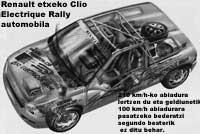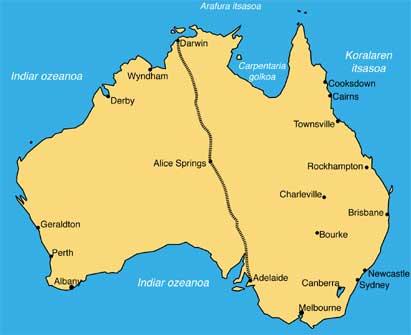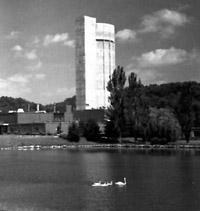Waking up, the high speed of solar energy
2000/01/23 Kortabarria Olabarria, Beñardo - Elhuyar Zientzia
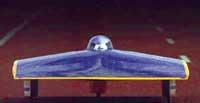
The SunRace 2000 rally will begin on 11 February and end on 20 February. From Sydney, passing through Canberra and finishing in Melbourne, it is the goal of motorists who meet in Australia. A total of 1,790 kilometers must be completed. The aim of this car rally is to bet on renewable energies and develop electric cars, demonstrating that renewable energies can be an alternative to the pollution problems caused by the emissions of conventional fossil fuel gases. Waking up, result of the work of the students
The SunRace 2000 rally will feature, among others, the prototype Despertaferro. The prototype is the electric car powered by solar energy, the first designed and developed in Spain with these characteristics. Although in view of the project one can think of something else, Despertaferro is not the result of a large group of research in the automotive sector, but the product of the work carried out by a group of students of the Polytechnic University of Catalonia. The prototype will have to compete with 50 other authors registered in the car race in Australia.
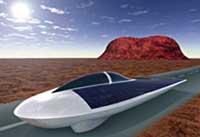
The delivery of Despertaferro began at the end of 1997-98 when Joan Orús, coordinator of the project, finished engineering studies. As he had the idea of building a solar car, along with several friends of his promotion he formed a team to develop the idea.
The car was presented on 20 December at the Science Museum of the La Caixa Foundation in Barcelona. But the students have not conformed to it. Besides working the idea and developing the car, the team of Joan Orús wants to show that the car can have a real role, that is why they decide to participate in the rally that will be held in February in Australia. However, doing what he does in the race, this group of students is not limited to that, but wants to promote the use of renewable energies and deepen in the studies of electric energy applied to the car.
Clean, light and fast model
For those who write, the name of the car Despertaferro is the most dazzling, since from there it is great. The prototype of the car has been carried out for 14 months, with a total of 21 million pesetas -840.000 liberes- for its development. If we look at the design of aerodynamics, we can say that Despertaferro is spectacular. The car does not pollute, is very light - it has 220 kilos -, can reach 105 kilometers per hour and has a power of 5.5 kW.
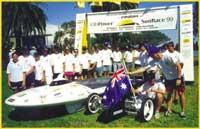
The Awakening prototype is designed for a single person, the driver. A security cell and a revolution ring protect the driver. The car has three wheels, two front and one rear, six meters in length, two meters in width and one meter and a half in height. The car is equipped with a Mavilor motor of 8 kW of maximum power, it circulates by a set of 16 batteries of 2.300 kW/h that accumulate the energy received by the photovoltaic plates located in the top of the vehicle. In the Australian rally, a vehicle assistant will analyze the speed of Waste, the energy it absorbs and the temperature. Once the race is finished, the car will be presented at the International Automotive Fair which is held in Barcelona.
Main features of the car
- Engine: Engine: Mavilor MA-55 DC brushless. 17 kilograms. 84V. Maximum 6,000 revolutions per minute. Output power limit: 8 kW.
- Speed : Maximum speed 105 km/h. Average 65 km/h.
- Weight: Weight: 220 kilograms.
- Chassis: Chassis: Carbon fiber.
- Brakes: Brakes: Hydraulic motorcycle disc brakes from 50 to 0 km/h in 22 seconds.
Also for the city
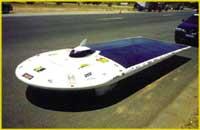
As for the SunRace 2000, although Despertaferro has had the greatest impact, there is still another electric car in the Polytechnic University of Catalonia. Unlike the above, the new project has as its objective the city. According to the project, the car will have less than 350 kilograms and can reach a speed of 45 km/h. Instead of using gasoline, it will run on batteries, will have a kW power and a capacity for two people. A student who participates in the project says that "our goal is to make a vehicle for the city, to perform the functions that carry out other means of transport but at a much lower price: to carry goods of low weight, short distance trips…. For this purpose it would have to perform easy maneuvers, they should be small and, for example, safer than the motorcycle."
This project has sought to give importance to low consumption and pollution, so the team that works has opted for an electric motor that guarantees the necessary autonomy and that does not generate pollution.
Several companies in the sector have already shown interest in both projects. Perhaps slower than that of nature lovers, but as can be seen, non-polluting energies are slowly advancing in all sectors.
Published in 7

Gai honi buruzko eduki gehiago
Elhuyarrek garatutako teknologia



